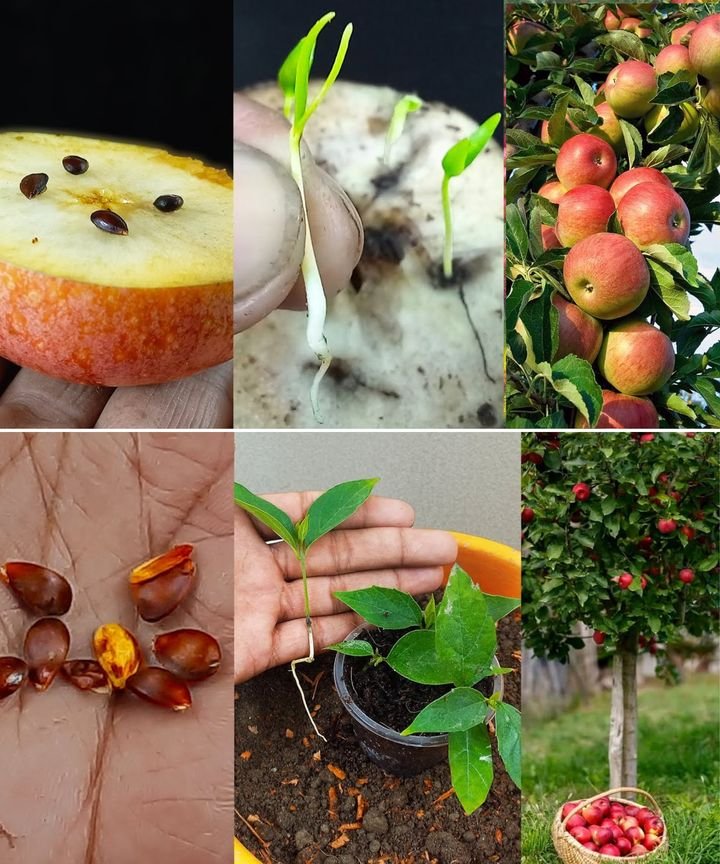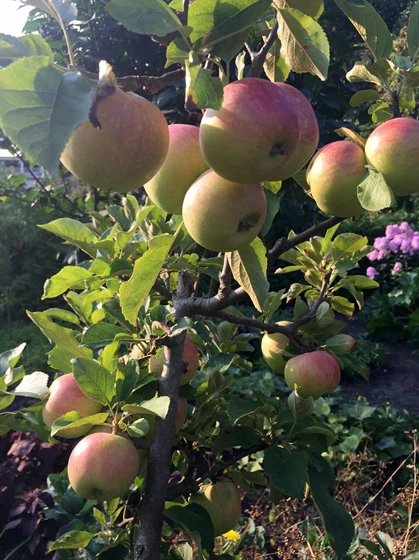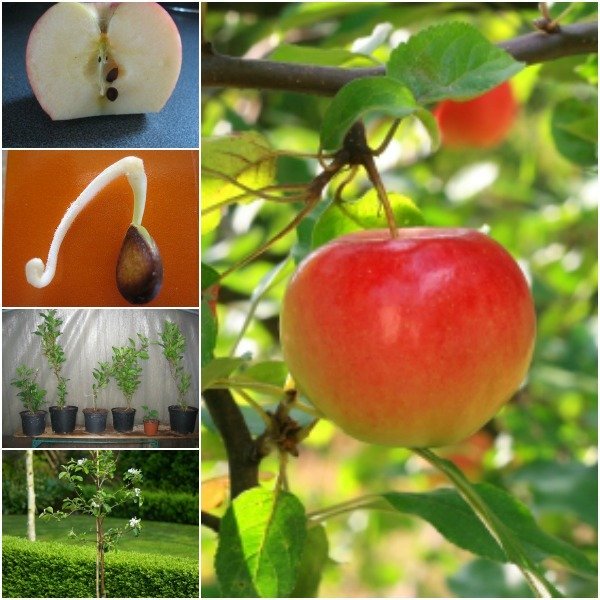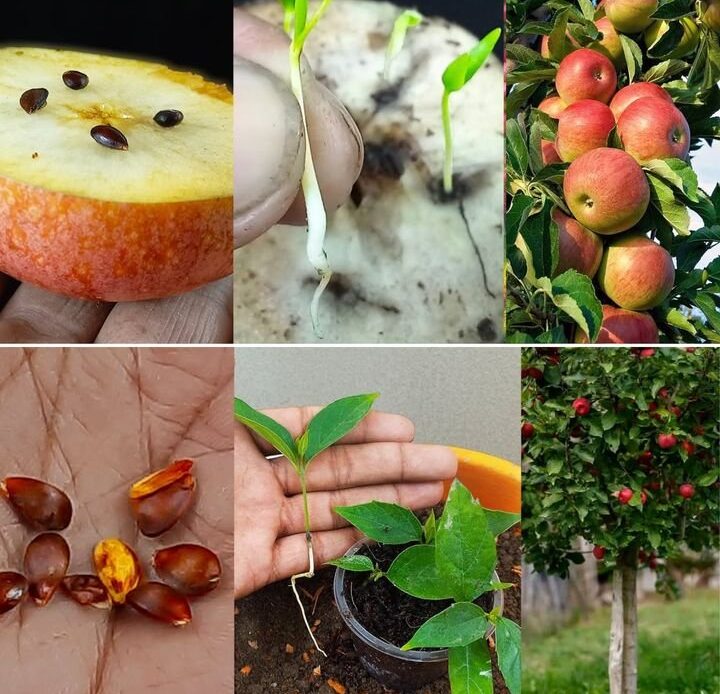Growing an apple tree from seed may seem like a slow and uncertain process, but with the right techniques, you can significantly speed up its growth and enjoy homegrown apples in as little as three years. Many gardeners believe that apple trees take five to ten years to bear fruit, but by following a strategic approach, you can accelerate their development and maximize their productivity. This guide will take you through the entire process—from preparing seeds to harvesting apples—while revealing key secrets to ensure success.
## **1. Preparing the Seeds**

The first step in growing an apple tree from seed is selecting high-quality apple seeds. While you can extract seeds from store-bought apples, keep in mind that most apples are hybrids, meaning their offspring may not produce fruit identical to the parent. However, this adds an element of surprise and uniqueness to your tree.
### **How to Prepare Apple Seeds:**
– Collect seeds from a ripe apple. The fresher the apple, the higher the chance of germination.
– Rinse the seeds thoroughly to remove any fruit residue.
– Dry the seeds on a paper towel for about 24 hours to prevent mold during the next step.
## **2. Stratifying the Seeds**
Apple seeds require a period of cold treatment, known as **stratification**, to break dormancy and stimulate germination. This mimics the natural winter conditions seeds would experience outdoors.
### **Stratification Process:**
– Place the dried seeds in a damp paper towel.
– Put the paper towel inside a sealed plastic bag.
– Store the bag in the refrigerator at **35-40°F (1-4°C)** for **6-8 weeks**.
– Check periodically to ensure the towel remains moist but not soaking wet.
– After 6-8 weeks, some seeds may start sprouting. These are now ready for planting.
## **3. Planting the Seeds**
Once the seeds have gone through stratification, they need to be planted in nutrient-rich soil to begin their growth journey.
### **Steps for Planting:**
– Choose small pots with good drainage holes.
– Fill the pots with **high-quality potting soil** mixed with compost.
– Plant each seed about **½ inch deep** into the soil.
– Water thoroughly but avoid overwatering to prevent rot.
– Place the pots in a **warm, sunny location** or under grow lights if growing indoors.
### **Tip:** Maintain soil moisture at all times, but do not let the soil become soggy, as excessive water can hinder germination.
## **4. Caring for the Seedlings**

After a few weeks, tiny apple seedlings will start to emerge. These young plants need proper care to grow strong and healthy.
### **Key Care Tips:**
– **Watering:** Keep the soil moist but well-drained. Water whenever the top layer feels dry.
– **Sunlight:** Provide at least **6-8 hours of direct sunlight** per day.
– **Temperature:** Maintain a warm environment of **65-75°F (18-24°C)** for optimal growth.
– **Thinning:** If multiple seedlings sprout in one pot, thin them out by keeping the healthiest one.
As the seedlings grow, they will develop several sets of leaves. Once they reach **6-8 inches in height**, they are ready for transplanting into larger containers or outdoor soil.
## **5. Transplanting the Seedlings Outdoors**
To ensure strong root development and future fruit production, transplanting apple trees into their permanent location is crucial.
### **Transplanting Steps:**
– Choose a **sunny** location with **well-draining soil**.
– Space each tree **15-20 feet apart** to allow proper airflow and growth.
– Dig a hole twice the size of the root ball.
– Place the seedling into the hole and fill with nutrient-rich soil, gently firming it around the roots.
– Water deeply to help the plant establish.
– Mulch around the base to retain moisture and suppress weeds.
### **Tip:** If your region has harsh winters, consider keeping young trees in pots for the first year before transplanting them outdoors.
## **6. Accelerating Growth**
Most apple trees take several years to mature, but you can speed up the process using these strategies:
### **Fertilization:**
– Apply a balanced fertilizer (**10-10-10**) every **4-6 weeks** during the growing season.
– Increase potassium and phosphorus to promote root and fruit development.
### **Deep Watering:**
– Instead of frequent shallow watering, water deeply **once or twice per week** to encourage deep root growth.
### **Mulching:**
– Apply **organic mulch** like wood chips or straw around the tree’s base to retain moisture and improve soil health.
## **7. Pruning for Strength and Productivity**

Pruning plays a key role in shaping young apple trees and encouraging early fruit production.
### **How to Prune Your Apple Tree:**
– Prune in **late winter or early spring** before new growth starts.
– Remove **weak, damaged, or crossing branches** to improve airflow.
– Maintain an **open-center or central-leader shape** to maximize sunlight exposure.
Regular pruning ensures your apple tree directs its energy towards strong branch formation and fruiting rather than excessive foliage.
## **8. Encouraging Pollination**
Most apple trees require **cross-pollination** with another variety to produce fruit.
### **Ways to Ensure Pollination:**
– Plant at least **two different apple tree varieties** within **50 feet** of each other.
– Attract **pollinators** by planting bee-friendly flowers nearby.
– Consider **hand-pollinating** using a soft brush to transfer pollen between flowers.
## **9. Managing Pests and Diseases**
Apple trees are susceptible to various pests and diseases that can impact growth and fruit production.
### **Common Pests & Prevention:**
– **Aphids:** Spray leaves with neem oil or insecticidal soap.
– **Apple Maggots:** Use sticky traps to catch adult flies.
– **Codling Moths:** Apply organic sprays or introduce natural predators like ladybugs.
### **Common Diseases & Prevention:**
– **Powdery Mildew:** Ensure good airflow and remove affected leaves.
– **Apple Scab:** Avoid overhead watering and use disease-resistant varieties.
– **Fire Blight:** Prune infected branches and disinfect tools after each cut.
## **10. Fruit Thinning for Better Quality**
In the second year, if your apple tree begins producing small fruits, it’s crucial to thin them out to improve overall fruit size and quality.
### **Thinning Process:**
– When apples are **marble-sized**, remove excess fruit, leaving **one apple per cluster**.
– This prevents the tree from becoming overloaded and ensures better development.
## **11. Harvesting Your Apples**
By the third year, your apple tree should start producing a small but rewarding crop of apples.
### **Signs of Readiness:**
– Apples are **firm, crisp, and fully colored**.
– When twisted gently, the fruit easily detaches from the branch.
Once harvested, store apples in a **cool, dark place** or refrigerate to extend freshness.
## **Conclusion**

Growing an apple tree from seed to fruit in just three years may sound ambitious, but with **proper care, strategic pruning, fertilization, and patience**, it is entirely possible. By following these steps, you’ll not only accelerate your tree’s growth but also enjoy the incredible satisfaction of harvesting your own homegrown apples.
Start your apple-growing journey today and experience the joy of turning tiny seeds into thriving, fruit-bearing trees
